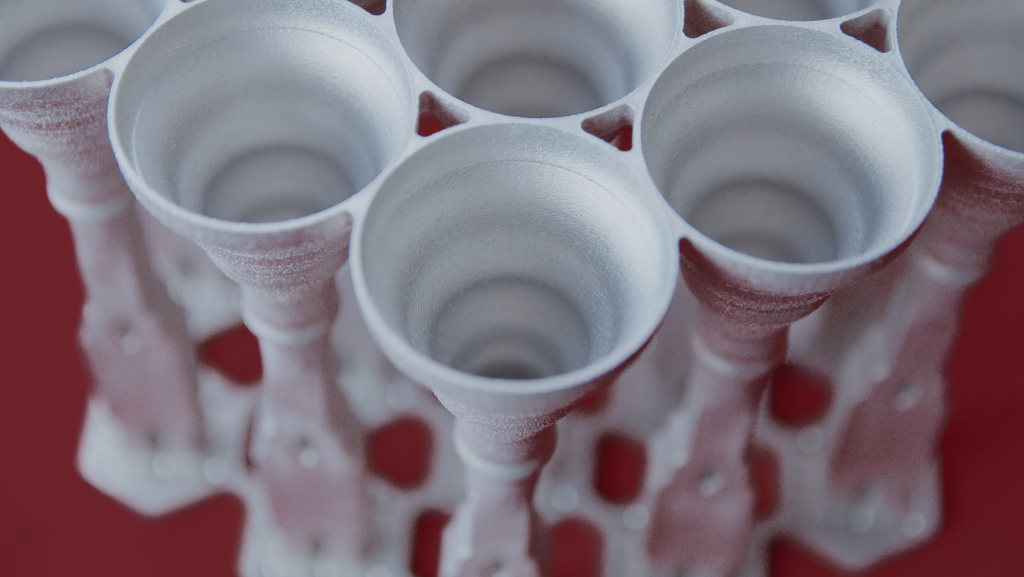Defense giant Lockheed Martin’s Space unit has selected electronics firms SWISSto12 and CAES (Cobham Advanced Electronic Solutions) to 3D print phased array antennas for future satellite missions.
Phased array antennas are collections of antennas that have the unique ability to change both the shape and direction of the emitted radiation pattern without actually moving the antenna itself. They’re designed so that the signals transmitted by the individual antennas in the array sum up and ultimately result in better gain and directivity in a specific direction.
In the context of satellites, phased array antennas are a crucial radiofrequency (RF) component in communications systems, allowing for long-range signal transfer between space and the earth.
“We look forward to this developing collaboration with Lockheed Martin, a global technology leader in aerospace, space, and security,” said Dr. Emile de Rijk, Founder and CEO of SWISSto12. “There is a tremendous opportunity offered by our 3D printed antenna technology to help upcoming satellite missions optimize their performance and throughput while enhancing their coverage flexibility. We are grateful for the trust Lockheed Martin places in SWISSto12 and CAES.”

RF 3D printing with SWISSto12 and CAES
Founded as a spin-off from the Swiss Federal Institute of Technology in Lausanne (EPFL), SWISSto12 specializes in high-performance RF components for communications and radar applications in the aerospace sector. The firm has its own patented laser-based 3D printing technology, which it uses to fabricate optimized parts made of aluminum, INVAR, PEEK, and titanium.
On the other hand, CAES is based in the US and develops advanced electronics for defense and aerospace systems. The firm claims to be the largest provider of mixed-signal and radiation-hardened technology for the US aerospace and defense industries.
“SWISSto12 and CAES provide a strong mix of innovative technical solutions and skilled talent,” said Kyle Griffin, VP of Lockheed Martin Space’s Advanced Program Development group. “We look forward to strengthening this relationship as we build solutions for increasingly complex challenges in space.”

3D printed phased array antennas
As partners, SWISSto12 and CAES aim to make additive manufacturing technology more easily accessible for US defense manufacturers like Lockheed. The former’s 3D printing capabilities combined with the latter’s design engineering expertise enable custom RF systems designed to meet stringent size, weight, and performance requirements.
For their latest project with Lockheed Martin Space, the partners will conduct the initial development of the 3D printed phased array antennas at SWISSto12’s headquarters in Switzerland. Then, they’ll be manufactured for end-use at CAES’ new 3D printing laboratory in Exeter, New Hampshire.
“For decades, CAES has developed and manufactured a variety of antennas, RF subsystems, and microelectronics for Lockheed Martin’s space missions,” said David Young, CTO at CAES. “Together with our partner SWISSto12, we are thrilled to collaborate once again to usher in a new wave of pioneering advanced electronic solutions based on additive manufacturing technologies.”

The 3D printing of RF components and other electronics is an emerging area of additive manufacturing. Just this month, researchers at Iowa State University tested a novel approach to 3D printing electronics in zero-gravity conditions. In place of gravity, the team’s technology utilizes electrical force to print conductive inks onto a glass base layer-by-layer, in a way that allows for the creation of complex circuitry. Working with NASA, the engineers aim to develop the process into a means of producing sensors in space.
Elsewhere, UK-based robotics firm Q5D Technology recently secured $2.5 million in seed funding to advance the development of its new multifunctional wiring and electronics 3D printer. Known as the ‘CU500,’ the 5-axis FFF system features a changeable tool head that can be adapted to deposit either polymers, metal pastes, or wiring onto large aerospace and automotive parts or electronic devices.
Subscribe to the 3D Printing Industry newsletter for the latest news in additive manufacturing. You can also stay connected by following us on Twitter, liking us on Facebook, and tuning into the 3D Printing Industry YouTube Channel.
Looking for a career in additive manufacturing? Visit 3D Printing Jobs for a selection of roles in the industry.
Featured image shows a Lockheed Martin A2100 satellite. Image via Lockheed Martin.



